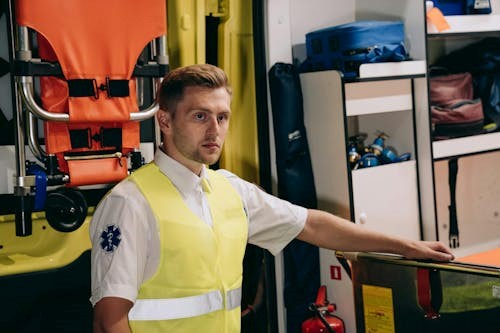In today’s fast-paced industrial landscape, the role of a health and safety engineer has become increasingly vital. These professionals are at the forefront of ensuring safe working environments, minimizing risks, and protecting the well-being of employees. With the growing emphasis on workplace safety and regulatory compliance, the demand for knowledgeable experts in this field is on the rise.
Here are some tips to improve your skills as a healthy and safety engineer:
Understand Industry Standards and Regulations
Familiarizing yourself with industry standards is essential for any health and safety professional. Organizations like OSHA and the EPA set guidelines that govern workplace safety and environmental protection. By staying current with these regulations, you can ensure compliance and reduce the likelihood of workplace incidents. Understanding these requirements helps you implement safety measures that protect employees and the organization.
Moreover, regulations often change. Regularly reviewing updates and new legislation ensures that your practices align with the latest standards. This proactive approach not only improves workplace safety but also demonstrates your commitment to professionalism in the field.
Pursue Continuing Education
Continuous education is a cornerstone of professional growth for health and safety engineering professionals. Engaging in ongoing learning opportunities keeps you informed about the latest developments and best practices. Many professionals pursue further education through specialized programs, such as an online industrial hygiene degree. This degree uniquely prepares you to analyze, predict, and preempt potential hazards in the workplace while ensuring compliance with regulations and addressing environmental health factors.
The Master of Science in Public Health in Industrial Hygiene program blends public health principles with scientific methods. You will learn to leverage toxicology, data analysis, and epidemiology to create strategies that meet and exceed basic safety regulations. You’ll also be equipped with research-backed and scientifically sound strategies that improve workplace safety.
Develop Strong Communication Skills
Effective communication is key in the realm of health and safety. As a health and safety engineer, you must clearly convey complex information to various stakeholders, including management, employees, and regulatory agencies. Strong verbal and written communication skills will improve your ability to educate others about safety practices and policies.
To improve your communication skills, consider taking courses in public speaking or technical writing. Practice making presentations or writing reports to develop your confidence and clarity. By honing these skills, you can advocate for safety initiatives more effectively and foster a safe culture within your organization.
Gain Practical Experience
Nothing beats hands-on experience when it comes to understanding workplace safety. Gaining practical knowledge in different environments enables you to apply theoretical concepts in real-world situations. Look for internships, apprenticeships, or volunteer opportunities that allow you to observe and participate in safety practices firsthand.
Engaging in diverse experiences helps you build a robust skill set. You’ll learn to assess risks, implement safety protocols, and respond to emergencies. These experiences improve your expertise and provide valuable insights into the challenges faced in various settings.
Learn to Conduct Risk Assessments
Conducting thorough risk assessments is a fundamental responsibility for any safety professional. This process involves identifying potential hazards, evaluating their likelihood and impact, and determining appropriate control measures. You can effectively mitigate risks and improve workplace safety by mastering risk assessment techniques.
Start by familiarizing yourself with common risk assessment methodologies. Techniques such as the HAZOP (Hazard and Operability Study) and FMEA (Failure Mode and Effects Analysis) can provide structured approaches to identifying and analyzing risks. Practicing these methods in various scenarios will boost your confidence and improve your decision-making skills in critical situations.
Familiarize Yourself with Safety Equipment
A solid understanding of safety equipment is essential for any health and safety engineer. Knowing the various types of equipment, their purposes, and how to use them can significantly impact workplace safety. Familiarize yourself with personal protective equipment (PPE), such as helmets, gloves, and respirators, as well as safety devices like fire extinguishers and first aid kits.
It’s also important to understand the maintenance and inspection of safety equipment. Regular checks ensure that all tools and gear are functioning correctly and safely. Create a routine for inspecting and maintaining equipment, and educate colleagues on proper usage. By being well-versed in safety equipment, you can better protect yourself and your team in hazardous environments.
Network with Professionals in the Field
Building a professional network is crucial for advancing your career in safety engineering. Engaging with other professionals allows you to share knowledge, learn from others’ experiences, and stay informed about industry trends. Consider joining industry associations, such as the American Society of Safety Professionals (ASSP), where you can attend meetings, workshops, and conferences.
Networking provides opportunities for mentorship and collaboration. Connecting with experienced safety engineers can offer insights into best practices and emerging issues in the field. These relationships can also lead to job opportunities or partnerships on safety initiatives, enhancing your career prospects and contributions to workplace safety.
Embrace Technology and Tools
Technology plays a vital role in modern safety engineering. Embracing new tools and software can streamline safety management and improve data analysis. Familiarize yourself with safety management systems (SMS) and incident reporting tools that help track and analyze workplace incidents.
Additionally, explore data analysis software to interpret safety data effectively. Understanding trends and patterns in workplace incidents can help you develop targeted strategies for risk mitigation. Staying updated with technological advancements ensures that you remain competitive in the field and can implement the most effective safety measures.
Stay Informed About Emerging Trends
The field of safety engineering is constantly evolving. Staying informed about emerging trends is essential for maintaining a competitive edge. Read industry publications, blogs, and journals regularly to keep up with the latest research and developments.
Participating in webinars, workshops, and online courses can provide insights into new technologies and methodologies. Engaging with thought leaders in the field through social media or professional forums allows you to discuss relevant topics and share knowledge. By staying informed, you can adapt your practices to align with industry advancements and improve workplace safety.
Improving your capabilities as a health and safety professional requires a commitment to continuous learning and practical experience. By understanding industry standards, pursuing further education, developing communication skills, gaining hands-on experience, and mastering risk assessments, you position yourself as a valuable asset in your organization. Familiarizing yourself with safety equipment, networking with professionals, embracing technology, staying informed about trends, and practicing ethical decision-making will further elevate your expertise. As you take proactive steps in your professional development, you’ll contribute significantly to workplace safety and health, ensuring a safer environment for everyone.




